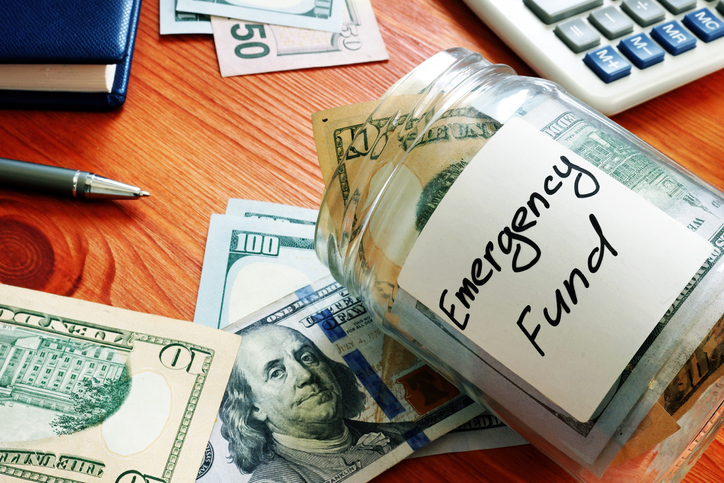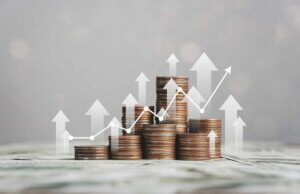Sometimes, life happens, and when it does, it’s important to be prepared. That’s why it’s important to always have an emergency savings fund for when that “rainy day” comes.
What Is An Emergency Fund?
An emergency fund is a sum of money dedicated to things like unexpected home repairs, job loss, medical procedures, and anything else you did not plan for. These funds allow you to dip into savings without using high-interest credit cards or loans during a time of financial hardship. Some people choose to put their emergency funds into a dedicated account, while others earmark the funds within an existing savings account.
Either way, by putting money into a dedicated savings account each month, you establish a solid savings bundle to use in the case of an emergency. Most financial advisors recommend keeping three to six months of expenses in the account, but some people have 12 or more. It depends on your expenses and comfort level. Either way – you should have an account that you do not touch unless there’s an emergency.
Saving for an Emergency Fund
First, you need to understand how much money you earn and spend each month. Calculate your monthly paychecks and any other income you receive, like bonuses, social security, or child support. Then, calculate your monthly expenditures, like housing costs, utilities, groceries, insurance, gas, and other household necessities. To learn how to appropriately budget for all of life’s expenses, check out our blog about using the 50/30/20 rule.
Once you know the total, you will need to determine how much money you need to put aside. If you need assistance, check out NerdWallet’s emergency fund calculator.
After the goal has been established, you can start putting money aside from each paycheck. In the case of an emergency, you can pull funds from the dedicated savings account, without having to take out a loan, use a credit card, or withdraw money from your 401(k) or IRA.
If you are looking to establish an emergency fund quickly, you can speed up your savings with these tips:
- Refinance or consolidate existing loans, such as a mortgage, car payment, or other debts. By refinancing, you may receive a reduced loan rate, meaning more money in your pocket each month.
- Reduce the number of monthly subscriptions. Comb through your bank statements to see what you’re spending money on. Realizing you never use your Disney+ subscription? End it to save extra cash!
- Use your skill set for a side hustle. Artists can sell their projects on websites like Etsy, and people with a special understanding of school subjects can become private tutors. The opportunities are endless, and if you have a skill, you can most likely profit from it.
- Add bonuses, monetary gifts, and tax refunds to your emergency fund. No shopping spree this time!
- Sign up for a side gig, like becoming an Uber driver or Shipt shopper. The extra earnings can go straight into your emergency fund.
Where to Keep an Emergency Fund
Emergency funds should be accessible, so it’s best to keep them in accounts that don’t have withdrawal penalties.
One option is to open a high-yield savings account with your financial institution. These accounts have high interest rates that accrue annually, so the more money you have in them, the more money you earn as well.
Another option is a money market account, which most banks and credit unions offer. These accounts have higher interest rates than traditional savings accounts, but they often require a monthly minimum balance, so make sure you can maintain the balance before committing to this account.
Lastly, certificates of deposit (or CDs), are low-risk investment options that you can obtain through most financial institutions and brokerages, and with high interest rates, you can earn more money per dollar you invest. These often have a term limit though, so if you take out a 12-month CD, then you won’t be able to withdraw the amount until one year after opening, otherwise you will face early withdrawal penalties.
Using an Emergency Fund
The short answer? Don’t!
It’s important to remember that emergency funds should only be used for actual emergencies, not vacations, debts, or other major expenses. If you find yourself in a pinch, the things you can use your fund for include:
- Medical expenses such as surgery, the birth of a child, or procedures that aren’t covered by insurance.
- Unexpected and necessary repairs to your home or vehicle.
- Everyday expenses if you lose your job or experience a pay cut.
- Funeral costs for a loved one.
- Emergency veterinary care.
Remember that things like a technology upgrade, car registration, property taxes, or holiday gifts are not considered emergency expenses, though they can be large costs sometimes. Plan ahead for things you expect to purchase so you can leave your emergency fund alone until you experience an actual financial emergency. Using the 50/30/20 budget rule will help you appropriately budget your money so this doesn’t become an issue.
Rebuilding Your Emergency Fund
In the event that you use your emergency fund, it’s important to take the proper steps to replenish it.
After reviewing your income and expenses again, you will determine a new goal and repeat the same steps as before. However, this time, you should consider ways to decrease unnecessary or luxury spending, like purchasing new clothes or going on vacation, until you’ve established a solid emergency fund again.
You never know when another emergency will happen again.
Whether you open a money market account or an additional savings account, it’s important that you set aside money in a place separate from your generic checking and savings account. By establishing a goal (and sticking to it), your savings will grow and better prepare you in the case of an emergency.
To learn more money saving tips, check out the Slavic401k blog.




